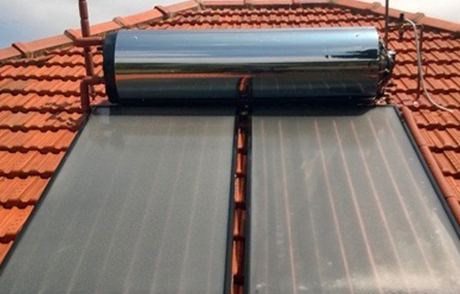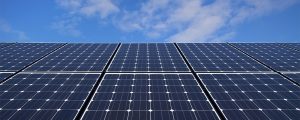Solar Water Heating – Simplicity
- We made it simpler, more robust, with greater reliability and longer life, and overcoming the problems of overheating.
- There are many types of solar water heating system, all with the same aim of heating water using solar energy.
- In the case of Ubersolar, the choice of design was to use the approach of split/ indirect/ forced circulation with a solar collector using evacuated tubes, and uniquely a vented solar manifold, in preference to other design types.
The reasons for this were:
- We can use the home’s existing tanks (any make), enabling retrofits, rather than having to replace or use a new tank
- We can avoid having tanks on roofs, which are frequently considered obtrusive, and may require structural reinforcement of the roof, but flat roof options are available
- Split systems where the tank is separate to the solar collector enables far more flexibility; in locating the tank in a roof void, on a wall, in a cupboard or on the ground up to 20 metres away from the solar collector
- Temperature control of hot water in the tanks is difficult, when the solar collector is integrated into the tank, or uses the solar thermal transfer process of thermos-syphon, (the principle of heat rises)
- Increasing efficiency by using a solar pump and PV panel (forced circulation), which enables the pump to be turned ‘off’ when the tank temperature has been reached, and also increases the efficiency over thermo-syphon systems
- By using vented solar manifolds, the temperature is limited in the manifolds to 99°C, in contrast to manifolds using evacuated tubes with heat pipe risers that can reach 260°C, or flat plate types that can reach 165°C. Such high temperatures in those solar collectors can result in component failure, lower reliability, increased maintenance requirements and reduced longevity
- Overcoming the problems of stagnation, where no hot water is being extracted from the system, resulting in overheating of either the tank or the solar collector.
- Incorporating ‘Plug and Play’ where the solar manifolds are joined together to make a solar collector of any size, to achieve the required electrical savings, and the required hot water output, all without overheating
- Simplicity without compromise, achieving the aim of heating water using stock components, overcoming all of the shortcomings and problems of other design types and heat transfer
- Cost, where the design and components result in more savings for less investment, providing a faster payback, higher return on investment, and longer life with far greater reliability.










